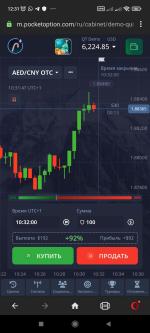
Pocket Option Chart Setup and Analyses
Understanding how to effectively configure and analyze charts is crucial for successful trading on Pocket Option. In this article, we will explore the steps to set up your charts appropriately, the tools available on Pocket Option, and strategies for effective chart analysis. For a more detailed guide, you can refer to Pocket Option Chart Setup and Analyses Pocket Option Настройка и аназиз графиков.
1. Introduction to Pocket Option
Pocket Option is a popular trading platform that allows users to trade a variety of assets including currencies, commodities, and cryptocurrencies. One of the most pivotal aspects of trading on this platform is understanding how to read and interpret charts effectively. The charts provide insights into market trends, price movements, and potential entry and exit points for trades.
2. Setting Up Your Charts
To begin setting up your charts on Pocket Option, follow these steps:
Step 1: Choose Your Asset
The first step is to choose the asset you wish to trade. Pocket Option provides a wide range of assets to choose from. Once you have selected an asset, you can open its chart.

Step 2: Select Chart Type
Pocket Option offers several types of chart views including candlestick, line, and bar charts. Each type provides different information and can be useful depending on your trading strategy. Candlestick charts, for example, offer more detail about price movements over a set period.
Step 3: Time Frame Selection
Next, you need to choose the time frame for your chart. This can range from one minute to several hours or even days. The time frame you choose should align with your trading strategy—shorter time frames can be useful for day trading, whereas longer time frames are better for swing trading.
Step 4: Add Indicators
Indicators can help you analyze the market trends and make informed trading decisions. Popular indicators include Moving Averages, Relative Strength Index (RSI), and Bollinger Bands. You can add these indicators to your charts based on your analysis needs.
3. Analyzing Your Charts
Once your chart is set up, the next step is to analyze it effectively. Here are some strategies that can enhance your analysis:
Technical Analysis
Technical analysis involves analyzing price data to forecast future price movements. Traders use various tools and indicators to identify patterns, support and resistance levels, and trends. Understanding how to use technical analysis can provide you with an edge in the market.

Chart Patterns
Chart patterns are formations that can indicate potential market movements. Some common patterns include Head and Shoulders, Double Tops and Bottoms, and Triangles. Identifying these patterns can help you make well-informed decisions on entry and exit points.
Volume Analysis
Volume plays a significant role in confirming price trends. Analyzing volume in conjunction with price action can help verify the strength of a price movement. Higher volume often indicates stronger price moves and trends.
4. Setting Up Alerts
Pocket Option allows traders to set up alerts based on specific price levels or indicators. This feature can help you stay informed about market movements without constantly monitoring your charts. Setting alerts can improve your responsiveness to market changes and help you act quickly.
5. Practical Tips for Successful Chart Analysis
Here are some practical tips to improve your chart analysis skills:
- Practice regularly: Spend time analyzing different assets and experimenting with various settings on your charts.
- Stay informed: Keep up with market news and events that could impact your trades.
- Maintain a trading journal: Document your trades, analysis methods, and outcomes to learn from your experiences.
- Utilize demo accounts: Practice your strategies in a risk-free environment before applying them in live trading.
6. Conclusion
Effectively setting up and analyzing charts on Pocket Option is an essential skill for traders. By understanding different chart types, time frames, and indicators, you can enhance your market analysis and improve your trading performance. Moreover, incorporating technical analysis, recognizing chart patterns, and staying informed about market trends will position you for greater success in your trading endeavors. By continuously practicing and refining your strategies, you’ll build a solid foundation that can lead to consistent profitability on Pocket Option.